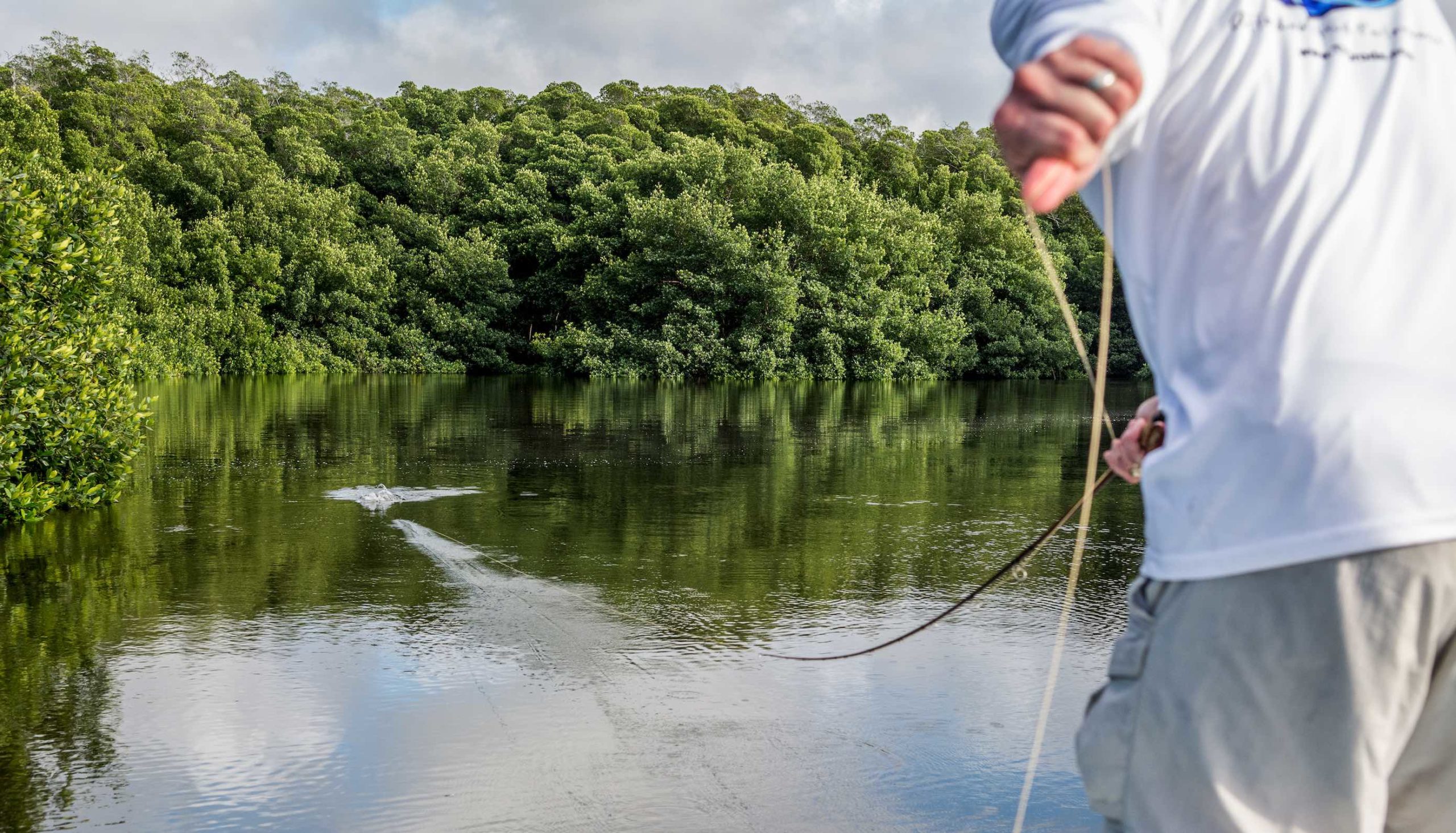So you have a rod and a reel. It’s time to add a fly line and a leader. Be patient. Pretty soon, you’ll be ready to go fishing. Note: Parts I, II and III of our Getting Started in Fly Fishing are helpful in providing context, but not necessary.
The Fly Line
First things first. Before you think about a fly line, you’ll need backing. Backing is a supple polyester material that connects to the reel. The fly line connects to the backing, usually with a loop-to-loop connection.
Most freshwater setups will call for approximately 75, 100 yards of backing. The backing gives the angler extra protection after a big fish runs through 90, 100 feet of fly line. Chances are, though, most freshwater fish — trout and bass — are not going to test your backing. Saltwater species —- redfish, snook, bonefish and tarpon — will do so regularly, which is why you will want more backing in the brine. Each reel has a designation for the amount of backing. If you’re not sure, ask your local fly shop.
Now that you have an overview of the lines and connections, it’s time to pick a fly line. Your first fly line likely needs to be weight-forward floating, which will allow you to fish dry flies, poppers as well as most streamers and nymphs, which are subsurface offerings. As you get more advanced, you can buy sinking-tip setups, which allows you to the fly to the bottom faster. But for now, it’s best to keep things simple with a weight-forward line.
The benefit of the weight-forward line — at least for the beginner or intermediate angler — is that the bulk of the weight of the line is in the first 30 feet or so, which makes it easier for the newcomer to feel the rod bend and straighten, load and unload, when casting.
Lines are designated by weight and designed to match the weight of the rod. These designations are often found on the butt of the fly rod, aka WF5, which means weight-forward 5 weight. Most of the time, the fly line matches the rod, but not always. If you’re technically inclined and curious, this post explains why some fly lines don’t always match up properly.
The Leader
Your leader serves as the connection from the fly line to the fly. It’s comprised of three sections — the butt, the mid-section and the tippet. Leaders are measured by the diameter of the tippet, from 0X to 8X, with 0X being the biggest and 8X the smallest. The standard freshwater leader lengths are 7.5, 9 and 12 feet.
A 4X, 7.5 or 9-foot leader will work for most trout and bass situations. If you are fishing for spooky fish, you’ll need a longer leader, perhaps 12 or 13 feet. Longer leaders provide stealth, but are generally more difficult to cast.
A medium-size freshwater leader such as 4X will suffice in most situations, but ideally the diameter of the tippet matches the size of the fly. For instance, you wouldn’t want to toss a tiny size 22 trico pattern with a 3x or 4x leader. A 5X, 6X or 7X leader is a much better choice. However with a bass popper, you might want a 2X or 3X leader, something stiff enough to propel a bigger offering.
Dry-fly leaders are made from nylon. If you decide to go subsurface, use a fluorocarbon leader/tippet. These sink faster.
You can buy various types of leaders. For simplicity, we’ll stick with these two: knotted leaders and tapered leaders. The difference is self-explanatory: If a leader uses knots to fuse its sections together, it’s a knotted leader. Tapered leaders are knotless.
If you’re a serious dry-fly fisherman, you might try a braided leader. However, the majority of fly anglers use tapered leaders. They cast well and you don’t have to worry about knots.
The Knots
There are several knots you should learn how to tie when dealing with backing, fly line and leaders. The arbor knot attaches the backing to the reel. The double surgeon’s or perfection loop is used to make a loop-to-loop connection. The backing will have one loop, the back of the fly line another.
To attach the leader to the fly line, another loop-to-loop connection usually is required. Your leader should have a pre-made loop. But if it doesn’t, a perfection loop works fine.
If you’re tippet needs replacing, the standard knot of choice is the blood knot. If you tie your own leaders, you will need to master this knot. Once you’ve secured the tippet, use a clinch or Lefty Kreh’s non-slip mono loop to attach your fly of choice.
Any advice on fly lines or leaders? Feel free to check in with a comment or two on one of our social media pages.







